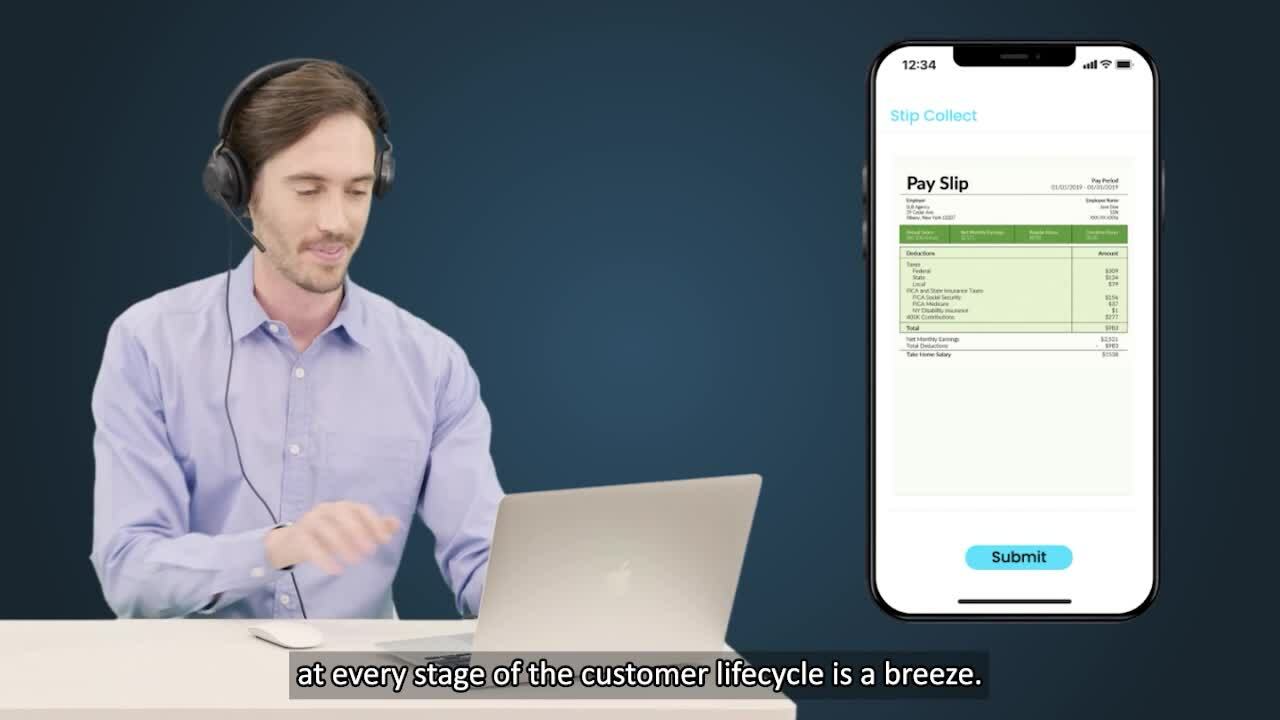In today's fast-paced world, customers demand seamless experiences and effortless interactions with financial service providers. However, the reality is often quite different, with customer journeys riddled with inefficiencies, frustrations, and sometimes bill shock. From navigating complex document or ID processes, to grappling with unexpected and unwelcome surprises, it's no surprise that many customers are left dissatisfied.
Bill shock refers to the jolt of surprise, dismay, and concern customers feel upon receiving unexpectedly high bills or fees. This can happen due to hidden charges, unclear pricing structures, or sudden fluctuations in costs and other services.
According to Ofcom, “nearly a third of mobile contract customers who experienced bill shock in the last year said they had experienced this due to the same issue on multiple occasions.”
Today, we'll explore the top five customer experience practices to help financial service providers mitigate bill shock and revolutionize the entire customer journey.
Wait… What Exactly is Bill Shock?
Bill shock, as defined by the FCC, is sudden and unexpected increase in monthly bills that is not caused by a change in service plans.
Bill shock is most commonly associated with telecommunications, but can resonate across various industries, such as energy or utilities. As a financial provider, you may not be able to change the prices that mobile phone or utility companies charge – but you can improve customers’ visibility, helping them avoid unwelcome surprises, and improving their experience with you.
Whether in the US, UK, or Europe, bill shock is a jarring and worrying experience for consumers. It is often triggered by a combination of factors, such as fluctuating service charges, complex pricing structures, or the unawareness of certain usage thresholds.
Bill shock occurs when customers lack transparency and real-time visibility into their consumption, making it challenging to anticipate costs accurately. The subsequent impact on customer loyalty and trust can be substantial, necessitating proactive measures to improve transparency.
The Challenges Faced by Customers
To illustrate the occurrence of bill shock in the real world, consider the following scenarios:
- A consumer signs up for a seemingly affordable data plan with their telecom provider. However, during the month, they unknowingly exceed their data allowance, leading to a massive bill at the end of the billing cycle. This unexpected expense can leave customers feeling frustrated and overwhelmed.
- Or, in the banking realm, a business owner might encounter bill shock when making international transactions. The unforeseen currency conversion fees, along with transaction charges from intermediary banks, can significantly inflate the total cost.
Situations like these highlight the need for financial service providers to address the consistent visibility pain points of their customers; ensuring efficient, transparent, and seamless CX throughout the customer journey.
By empowering customers with real-time information and personalized solutions, businesses can actively mitigate bill shock and foster lasting loyalty.
Top 5 Financial Service CX Practices to Avoid Customer Bill Shock
Streamlining CX is no longer an option but a necessity in the financial service industry. According to The Financial Brand, banks and financial institutions that deliver exemplary journeys see significantly higher referrals and increased share of deposits, while those with negative CX risk sacrificing 12.5% of deposit shares.
In other words, CX is a strategic differentiator in today's competitive landscape. To thrive in this digital world, financial service providers must embrace innovative practices that redefine CX and empower their customers with effortless journeys.
Here are 5 ways banks and other financial service organizations can orient their CX initiatives to avoid bill shock amongst their customers.
1. Be Human-First in a Digital World
In a rapidly digitizing world, it’s essential to never lose sight of the human touch. Personalized interactions; employ empathetic communication; and offer responsive support that acknowledges the unique needs of your customers.
Authentic human connection can make all the difference, making customers feel valued and understood, ultimately fostering trust and loyalty.
2. Build Trust Through Transparency: The Customer-First Approach
This point follows the above. In financial services, transparency is the foundation of trust – when customers can see and understand their relationship with you, they implicitly grow to trust and value your service (McKinsey).
Embrace a customer-centric approach by providing clear and concise information about your services, fees, and policies – you might provide automated reminders when they are nearing a spend limit, for instance, or send alerts regarding irregular subscription charges on their account. Transparent communication builds credibility and reassures customers that their financial wellbeing is your top priority.
When customers know they can rely on your honesty and openness, they are more likely to stay loyal and refer others to your business.
3. Empower Customers: Financial Education and Resources
To many users, the whys and wherefores of financial services can be notoriously complex. You can help make their lives easier by providing some valuable pointers, financial education, and other useful resources.
Educated, informed customers are more confident in their financial decisions, and appreciate your company going out of its way to keep them up to speed. As a result, they’re likely to engage more actively with your services.
As part of your customer journey map, periodically offer material such as:
- Educational content
- Industry updates
- Webinars
- Interactive tools
- Explainers
By supporting their financial literacy, you establish yourself as a trusted advisor and foster a long-lasting relationship.
4. Offer Flexible Payment Options
In today's dynamic market, catering to diverse customer needs is essential. So ensure your organization is equipped to provide a wide range of flexible payment options that align with your customers' preferences and lifestyles.
This would include enabling secure and seamless transactions through digital wallets, installment plans, and contactless payment methods, for instance. Flexible payment solutions not only enhance convenience but also reflect your commitment to adapting to your customers' evolving requirements.
5. Use Technology to Streamline Journeys
This might be the most important point yet. In our digital world – where convenience is king and time is always of the essence – too many banking customer journeys are painfully convoluted.
Requesting customers to print, sign, and send documents, unwieldy and siloed ID verification, risky payment processes, clunky PDF forms… all these things (and more) serve only to frustrate, irritate, and dissuade customers from banking with you.
Forget ‘customer journey’, it becomes more of a customer quest – but imagine if things could be different. Imagine if each and every one of your customers could complete:
- Digital ID verification,
- eForm population,
- Document collection,
- eSignatures,
- Secure PCI Compliant payments,
and more, in one automated and customer-centric workflow.
Solutions like our Digital Completion Cloud allow your customers to digitally complete the entire financial service process, for a more streamlined, intuitive, and rewarding journey.
How to Improve Customer Relationships
Ultimately, in today's rapidly evolving financial landscape, CX has emerged as a key battleground for businesses seeking to thrive in a competitive market. To help combat the customer challenges presented by bill shock, adopt a proactive and human-centric approach to your strategic journey mapping.
Embracing future-proof technology is paramount in streamlining financial customer journeys. The rise of digital solutions signals a new way forward, by enabling effortless completion of tasks like digital ID verification, eSignatures, and secure payments.
Looking ahead, the future of financial service CX lies in the strategic integration of people, processes, and technology. As businesses continue to adapt to changing customer expectations and navigate the market, data security, and regulatory crises, those who prioritize customer-centricity and employ innovative tools will emerge as the industry leaders.
Bill shock may be a formidable challenge, but with the right approach, you can help mitigate it, and even transform it into an opportunity to improve customer relationships and drive sustainable growth.




